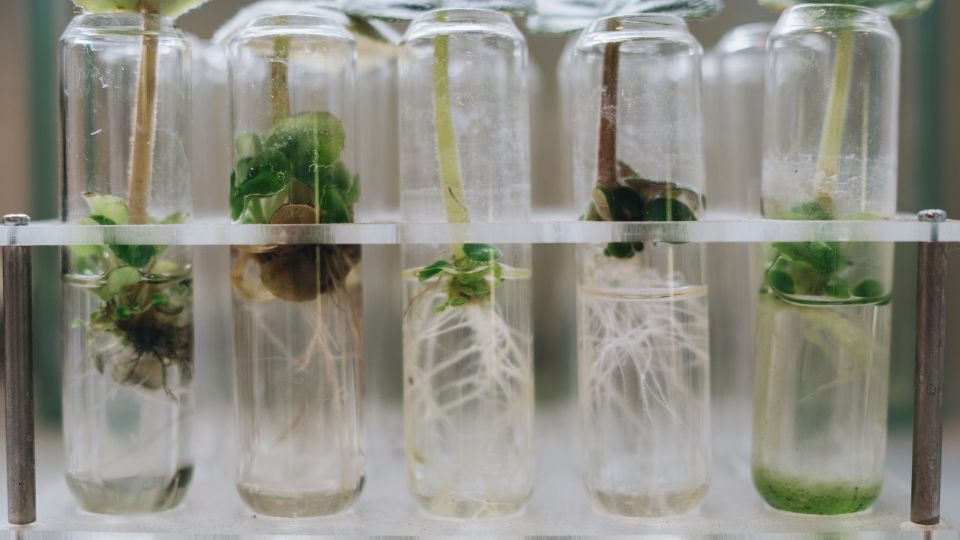Hybrid coffee, environmentally conscious and strengthened by Arabica, is here to stay. It combines the best traits for enhanced resilience and sustainability. Join us on a tour of hybrid coffees from various regions.
Passionate about coffee-making? Elevate your skills with a Nationally Accredited Barista Coffee Certification.
Why Coffee Hybrids?
Global Coffee Research leads to hybrid coffee development through scientific methodologies, fostering regional breeding hubs for genetic improvement over modification.
Addressing climate challenges is complex; no quick fixes exist. Coffee, with its regional flavours and varying acidity, faces a pressing need for solutions. Farmers move uphill for cooler climates as Arabica’s cultivation land shrinks. By 2050, Arabica-growing land may halve.
What Is Hybrid Coffee?
A delicate, high-scoring arabica is frequently crossed with a more hardy, resilient one to create hybrid coffee. The resulting variety is envisioned to retain the latter’s toughness without sacrificing the former’s taste. Does it affect coffee agitation, extraction or channelling at all? The answer is no.
Although this has been used for many years to treat specific coffee plant diseases, researchers have recently been more interested in using it as a climate change mitigation strategy. And as the number of studies increases, interesting advances in quality and flavour have also occurred.
In the 1990s, coffee research institutions started taking hybrid coffees seriously. The initiatives attempted to create strains that could withstand environmental stress and better adjust to shifting microclimates for adequate coffee production.
Interested in an exciting career in coffee making? Getting trained at a Barista Institute helps you keep up with the trends and the changing world of coffee experimentation.
Hybrid Coffee Varieties
First, we must recognise that Arabica coffee has historically made up more than 60% of all coffee produced worldwide due to its superior quality. Arabica is unfortunately vulnerable to rust, a foliar disease brought on by a fungus. The condition does not cause immediate damage, but will gradually kill the coffee tree, and necessitates a wait of 3-5 years for new seedlings to be harvested.
The remainder of the world’s supply is made up of Robusta coffee plants, which produce coffee with the potential for lower quality than Arabica but greater resistance to numerous diseases, including rust.
A Brief Guide to Hybrid Coffee Varieties
The Timor Hybrid
Soon after it was discovered in the early 20th century, the Timor Hybrid, often known as ‘Tim Tim’ or ‘Hibrido de Timor,’ became a popular cultivar. It now serves as the genetic foundation for many disease-resistant arabica cultivars, the most popular of which are referred to as Catimors and Sarchimors jointly.
Catimor and Sarchimore Hybrid
Catimor and Sarchimor Hybrids
- Catimor: Cross of Timor and Caturra, known as ‘tea coffee.’
- Scientifically, it’s Arabica (Timor comes from Arabica and Robusta).
- Also labelled T8667, distinct in Central America.
- Sarchimor: Hybrid of Timor and Costa Rican Villa Sarchi, grown in India and Costa Rica.
Resilient Traits
- Due to parent Timor, immune to coffee leaf rust and stem borer.
- Sarchimor adapts to low and medium altitudes, offering respectable cup quality.
F1 Hybrid
F1 Hybrid Creation
- F1 hybrids focus on increasing production.
- Used SL28, SL34, Sudan Rume, Bourbon selections and Catimors to create hybrids known as Ruiru 11.
- Aimed to combine resistance to Coffee Berry Disease, compact size, high yield and quality.
Cenicafe 1 Hybrid
Cenicafe 1 is the offspring of the cross between the Caturra and Timor Hybrid 1343, producing eight advanced progeny out of the 116 initially chosen by Cenicafe’s Breeding Program.
The Colombian Coffee Producers Federation (FNC), which has spent the past 20 years researching to boost the profitability of coffee farmers, unveiled Cenicafe 1, a unique coffee variant.
With its modest stature, great productivity, high adaptability to Colombia’s coffee areas, and resistance to rust and the Coffee Berry Disease, this novel variety stands out among other coffee plants (CBD).
Its size and design, which are similar to those of the Colombia and Caturra kinds, will allow for large crop densities (up to 7,000–10,000 plants per hectare). Greater densities are necessary to increase production, which is necessary to increase the profitability of coffee farmers.
Catuai Coffee Hybrid
Catuai coffee was created in 1949 by the Institute Agronomico (IAC) of Sao Paulo State in Campinas, Brazil. In 1970, they made it available to the general population, first at a few university test farms and then more afield.
To create a coffee that produced a lot of beans but took up little room, they crossed the smaller Caturra plant with the more productive Mundo Novo plant. It also expands swiftly. Only three years pass before the first harvest.
Jember
The Jember cultivar is widely used in Indonesia. It goes by many names, including S795 and Linie S. Although the cultivar was created in India, Jember is the name of a regency in East Java and the location of a research facility through which it was distributed.
It is a disease-resistant hybrid created through the breeding of two resilient parents, Kent and S228.
How Hybrid Coffees Can Contribute To Sustainability In The Future:

Climate change poses a challenge to international coffee production, presenting a severe risk to growers and consumers alike. With over 2.25 billion daily cups, coffee transcends a mere beverage, playing a vital cultural role.
Cultural Icon and Economic Anchor
Coffee serves as a motivator, community focal point and topic of connoisseurship. It’s a massive commercial food product, mainly produced by small-scale farmers and globally, nearly 120 million livelihoods depend on coffee.
How Hybrid Coffees Can Contribute To Sustainability In The Future
Climate Change — Rising temperatures are adversely affecting coffee production, leading to lower quality and yields. By 2050, almost half of the existing land may become unsuitable for growing arabica coffee.
Embracing hybrid coffee varieties not only addresses this challenge but also ensures financial stability and prosperity for our farmer partners. This ongoing commitment to supplying hybrid coffee also elevates the overall quality of the beverage.
Threat Of Diseases — The coffee borer and coffee leaf rust (la roya) devastate entire crops. The 2012 Central American coffee rust epidemic resulted in billions of dollars in lost crop revenue and an estimated 1.7 million lost jobs. The new hybrid varieties exhibit higher resistance to these coffee diseases.
Farmer Yield — Higher yields per acre lead to increased investment in quality without sacrificing affordability, ultimately generating more income for the farmer.
For the end consumer enjoying coffee at our favourite cafe, supporting sustainable coffee production is important, but affordability matters too. Hybrid coffees provide a win-win solution for both farmers and consumers by balancing sustainability with reasonable prices.
Is Hybrid Coffee Better Than The Natural Variety?
The hybrids sound like the ideal option because most of these coffees are of excellent quality, have high levels of disease resistance, and have remarkable flavour characteristics. The flavour and aroma may be more appealing than many traditional cultivars. Certain F1 hybrids can treble the production of the widely cultivated Kadura and Kadouai in Costa Rica.
However, several variables, such as altitude, equatorial distance, and growth temperature, can affect the quality of coffee. These variables all impact the fruit’s ripening process, and the slower the rate, the better the flavour. The nutrients in the soil help the coffee tree grow stronger and produce better coffee beans. For instance, nitrogen levels are high in volcanic soils.
Flavour quality is influenced by planting, harvesting, and handling practices. Certain treatments can also enhance the coffee’s flavour qualities. For example, exposure to the sun or honey can enhance the coffee’s sweetness, while washing can bring out a cleaner, brighter flavour. There are some coffees and origins that respond better to certain treatments.
Conclusion
F1 hybrids are a promising development for the coffee sector and could solve issues like the lack of genetic variety in Arabica, the influence of climate change, and disease problems such as leaf rust. We can anticipate their future development for the betterment of the industry and sustainability.
If you are passionate about coffee-making, follow the link to elevate your skills with a Nationally Accredited Barista Coffee Certification.



